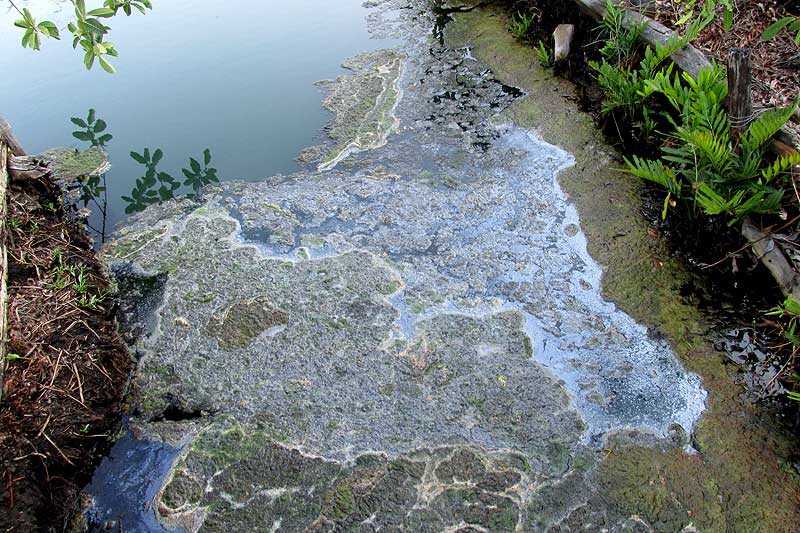Excerpts from Jim Conrad's
Naturalist Newsletter

from the March 29, 2015 Newsletter issued from Río Lagartos, on the north-central coast of Yucatán, MÉXICO
NATURAL OILY SHEEN ON WATER
Along the estuary's southern shore not far from San Felipe, a few kilometers west of Río Lagartos, the boat pulls up to a small dock at the end of a walkway extending into dense mangrove forest. The wooden walkway is elevated because the ground there often is submerged. The walkway leads to a small, open pond in the center of which fresh water constantly gushes to the surface. The pond and its surrounding mangroves are known as Petén Kambulnah, and the place is a destination for boating tours originating from San Felipe.
The freshwater pond abounds with colorful tropical fish constantly splashing and showing their colors, interesting aquatic vegetation, birds who hang around, and the occasional crocodile. At the beginning of the canal draining the freshwater from the spring into the estuary, a sort of oily scum accumulates, as shown above.
Not having a microscope here I can't identify the puffy, air-filled scum, but it's very similar to the cyanobacteria we identified in the Dry Frio River back in Texas. Some cyanobacteria are known to produce oily sheens atop water, so my guess is that that's exactly what we're seeing. Though some cyanobacteria are known to produce toxins that can sicken or even kill animals, the oily sheen at Petén Kambulnah is natural, occurs in unpolluted water and doesn't seem to be hurting anything in the life-filled little pond.
In fact, even up North, especially in periods between rains when water stands for a long time, often you see such perfectly innocent oily sheens, often produced by harmless iron- or manganese-loving bacteria occupying waterlogged soils. Decaying plant and animal material also can create an oily appearance.
Sometimes such oily sheens are interpreted as residue of oil pollution. However, natural oily sheens don't smell like petroleum, plus when poked with a stick, sheens caused by petroleum flow back together, but natural sheens like Petén Kambulnah's stay separated when broken up.